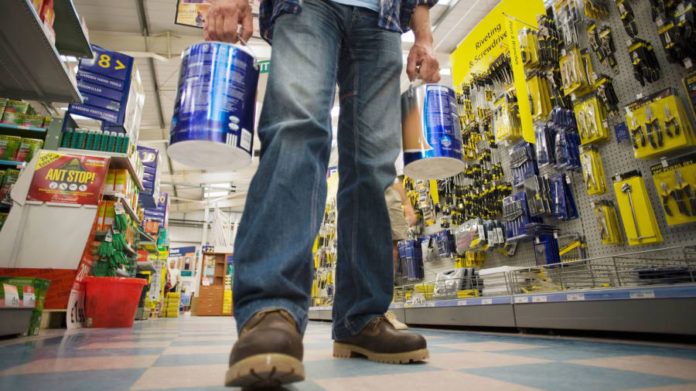Sales figures for the second quarter of 2020 just published in the BMF’s Builders Merchants Building Index (BMBI) reflect the negative impact of the COVID-19 pandemic on the construction industry with the sector down by -38.6% on Q2 2019.
However, digging deeper into the figures uncovers three very different trading months during this extraordinary period.
April, with almost a full lockdown, saw a year-on-year decline of -76.5%, as most merchants only provided essential deliveries to active trade account holders. May recovered to -39.9% on the previous year as restrictions were relaxed, while June sales were up +2.2% on June 2019, helped by two more trading days this year and a surge in sales of landscaping products, which saw year on year growth of 50.3% driven by garden walling/paving, fencing and gates and decking.
Landscaping was the strongest performer across the whole quarter, but still down -13.3% on Q2 2019, followed by workwear and safetywear, which fell by -31.2% on the previous year. Tools down -58.6%, was the weakest performer, followed by kitchens and bathrooms (-57.9%) and plumbing, heating and electrical (-53.1%).
The two largest product groups also saw a significant fall in sales for the quarter, with heavy building materials falling by -38.4% on Q2 2019 (and by -26.7% on Q1 2020) and timber and joinery products down -39.8% on the previous year and by -28.1% against Q1 this year.
However, both performed better in June with timber up +1.4% on the previous year and heavy building materials at +0.2%, driven by strong cement, aggregates and roofing performance
Commenting on the results, John Newcomb, chief executive officer of the BMF, said: “The initial impact of COVID-19 was industry-wide and merchant sales figures reflect other industry indicators for the quarter. In the first few days of the crisis, many construction sites, builders’ merchants, and manufacturers temporarily closed before putting COVID-secure measures in place, which pretty much wrote off April. Sales in May and, in particular, in June improved, but we are not out of the woods yet.
“Unfortunately, closing production lines led to shortages in certain product areas which is taking some time to unwind. We are also now experiencing quarantines for returning travellers and local lockdowns. Add Brexit and economic uncertainty to this, and it is bound to impact consumer confidence. The remainder of the year is impossible to predict, but I think everyone is expecting a bumpy ride.”
Emile van der Ryst, senior client insight manager – trade at GfK, added: “This year is probably unique, and we still have some way to reach before 2021. The initial shock and fear have been replaced by the realisation that this is a long- term problem, and the ever-present threat of a second wave remains. For merchants, the next couple of months will be crucial in helping the sector recover losses incurred during April and May. Good summer weather will help, but continued development of digital platforms across the sector provides a potential roadmap for the future, hopefully offering a solution to the second wave threat.”




